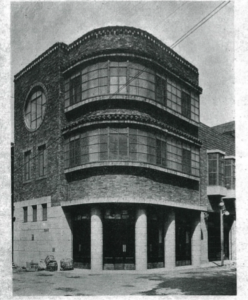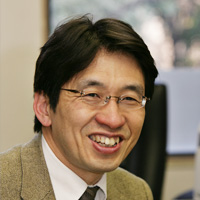
May 18, 2017
しのばずプロジェクトで仲町調査Shinobazu Project conducts Nakacho fieldwork
昨年度、東京大学大学院情報学環吉見俊哉研究室と凸版印刷株式会社の共同研究「しのばず文化資源活用プロジェクト」は、地域の文化資源発掘の取り組みの一環として、上野池之端仲町通り商店街を対象として調査を行いました。文京区と台東区にまたがっているこのエリア(上野二丁目、湯島三丁目)は、現在風俗店が集中し、治安や風紀が懸念されていますが、組紐道明をはじめとする10軒以上の老舗や、湯島天満宮、鈴本演芸場、横山大観旧宅・記念館(不忍池の西側、池之端1丁目)も近くに点在するなど、歴史を感じられる地域でもあります。今回、当プロジェクトは、この地域で長年暮らしてきた方々から地域に潜んでいる記憶を掘り起こし、また、このエリアに対する展望について伺いました。
今回の調査は道明(組紐)、心正堂本舗(画材・書道具)、堺屋酒店(酒・タバコ)、蓮玉庵(蕎麦)、十三や(櫛)、伊豆栄(鰻)、千代本(とんかつ)の店主の方々に調査協力のお願いをし、堺屋酒店(1880年以前に創業)、十三や(1736年に創業)、千代本(置屋を経て1965年に開業)へインタビューを実施しました。過去に花柳界で賑わっていたこの地域には、「関東大震災までは銀座よりもいいお店が沢山あった」ものの、昭和30、40年以降に花柳界が衰退していくなかで、老舗の立ち退きと風俗店の進出が進み、現在の街並みが形成されるに至ったという地域史が語られました。
また、調査のなかで現東京国立博物館や美術学校(現東京藝術大学)と関わりのある美術家たちがこの地を訪れていたエピソードも多く出ました。横山大観や伊東深水が界隈を頻繁に訪れていたことや、小絲源太郎の実家が池之端の料亭だったこと、組紐道明がかつて美術学校関係者のサロンとして機能していたことなどが明らかになりました。往時の美術界隈とのつながりを誇らしげに語る様子からは、かつてこの地域と博物館・美術学校との間にあった関係性を見出すことができました。
今後の仲町通りの発展については、女性が入りやすい店の増加や、飲食街の特化、地域コミュニティーの強化・形成などの未来像が店の方々から語られました。当プロジェクトは今後さらに調査を続け、収集したコンテンツをデジタルアーカイブ化し、公開していく予定です。
記事:潘夢斐、逢坂裕紀子(博士課程)、サム・ホルデン(修士課程)
The Shinobazu Cultural Resource Project, a joint research project between the Yoshimi Research Lab at GSII and Toppan Printing Co. that aims to uncover and find new uses for the various cultural resources around Shinobazu Pond in Ueno, conducted fieldwork in March around the Nakacho shopping street in the Ikenohata area south of the pond. This area extends across the border of Bunkyo and Taito wards and has lately developed a dubious reputation due to the numerous nightlife and entertainment establishments. However, more than ten old stores and establishments, such as Domyo Kumihimo, remain scattered through the area, which is also near Yushima Shrine, Suzumoto Theater,and the old home of famous author Yokoyama Taikan, to the west of Shinobazu Pond. The goal of this fieldwork was to unearth memories of the local area, as well as to seek the opinions of longtime residents and business owners about the area’s future.
During the fieldwork visits were made to Domyo (braided thread), Shinseido (painting and calligraphy goods), Sakai-ya Liquor Store, Rengyokuan (Soba), Jusan-ya (combs), Izuei (unagi), and Chiyomoto (tonkatsu), and interviews were conducted of Sakai-ya (founded in 1880 or earlier), Jusan-ya (founded in 1736), Chiyomoto (opened in 1965). The comb craftsman at Jusan-ya said that before the Great Kanto Earthquake, the area was a thriving geisha district with many establishments more luxurious than Ginza. After the 1950s and 1960s, the geisha district began to disappear, and the area changed to its present form.
The interviewees also recalled many episodes of artists visiting the area. Yokoyama Taikan, Ito Shinsui, and Koito Gentaro were clearly remembered, while Domyo also pointed out that the store once functioned as a salon for those members of the art school community. Locals spoke proudly of the area’s connection to respected artists.
The interviewees expressed a desire that the area become more friendly to women, that other restaurants would open, and that local business owners and residents would grow into a stronger community. After additional fieldwork, contents gathered in this project is planned to be released as a digital archive.
The article was written by Mengfei Pan, Yukiko Osaka(PhD student), Sam Holden(MA student)
主担当教員Associated Faculty Members
教授
非公開: 吉見 俊哉
Professor





